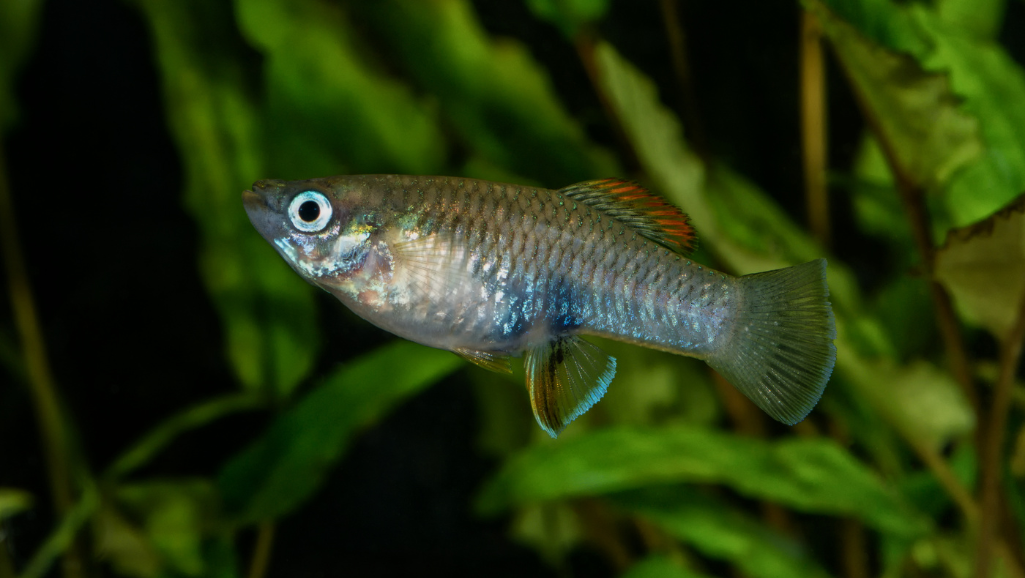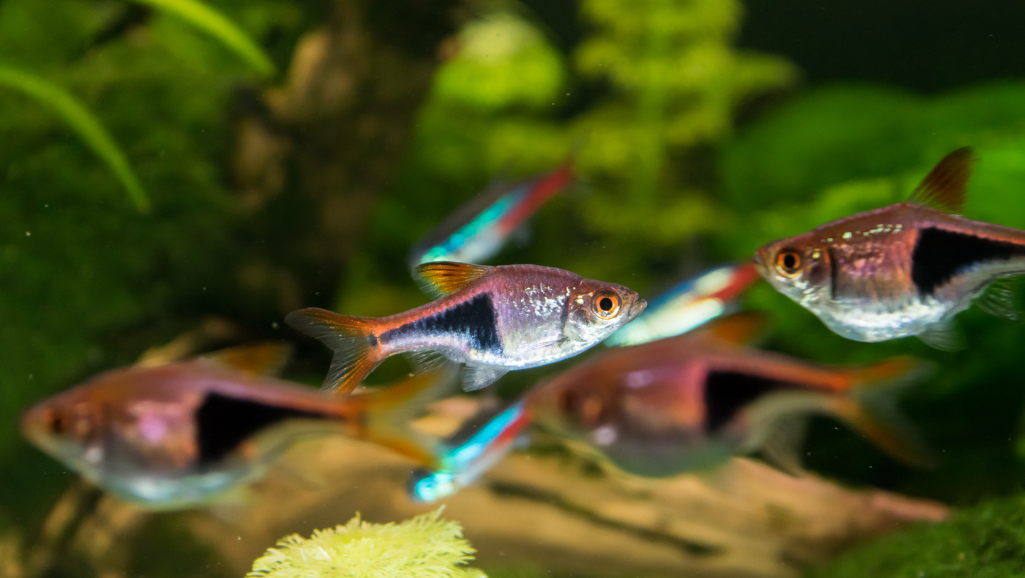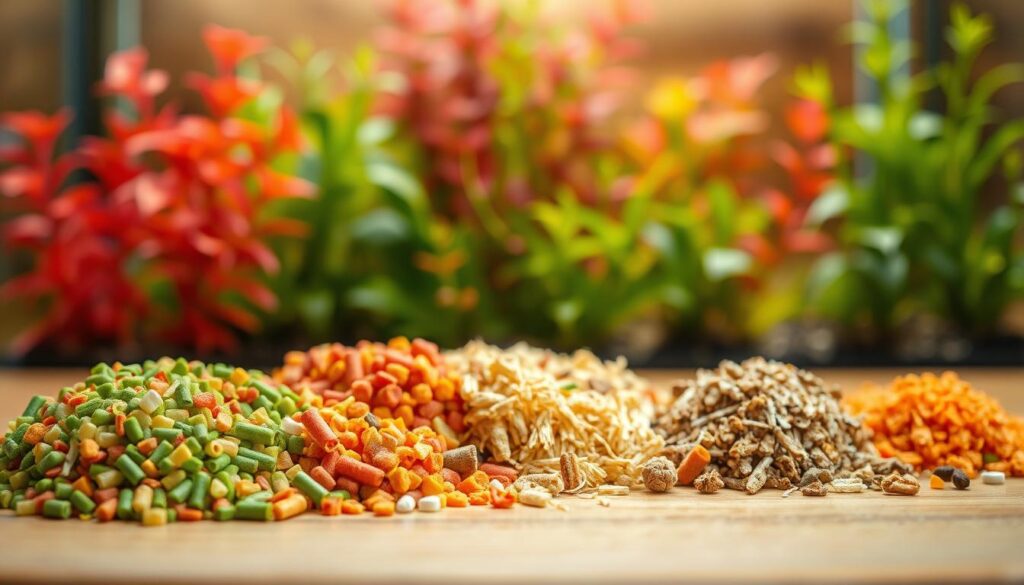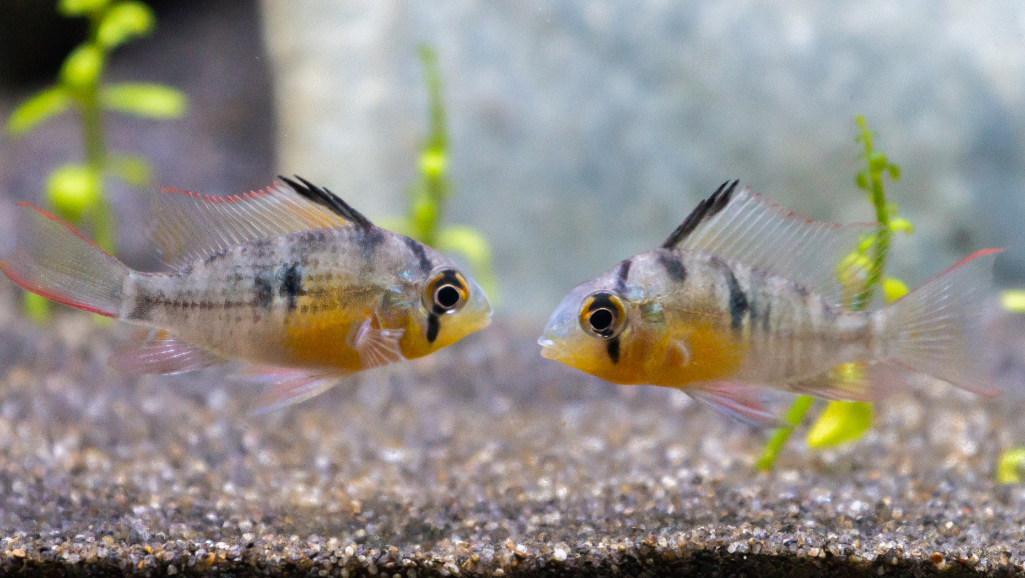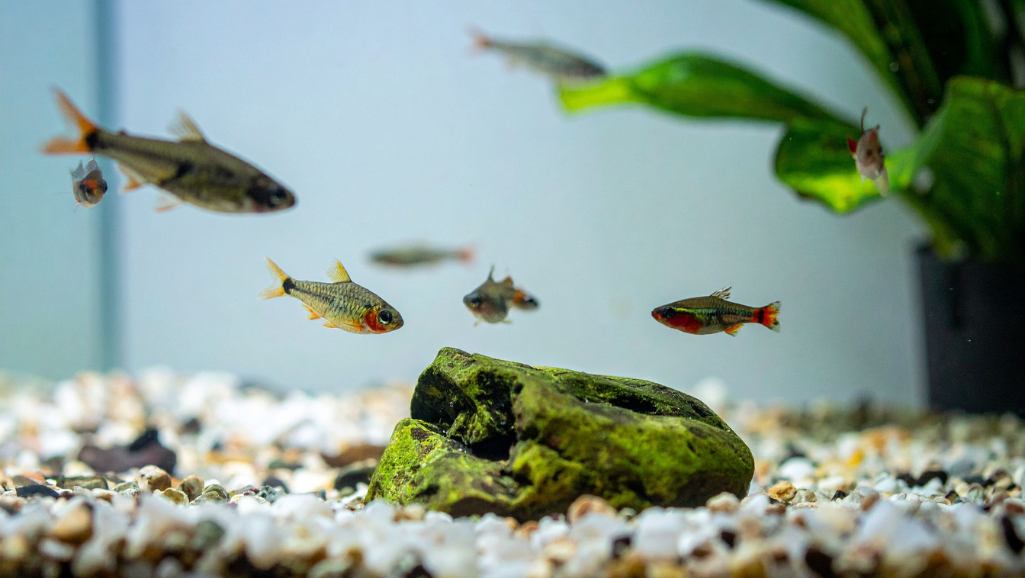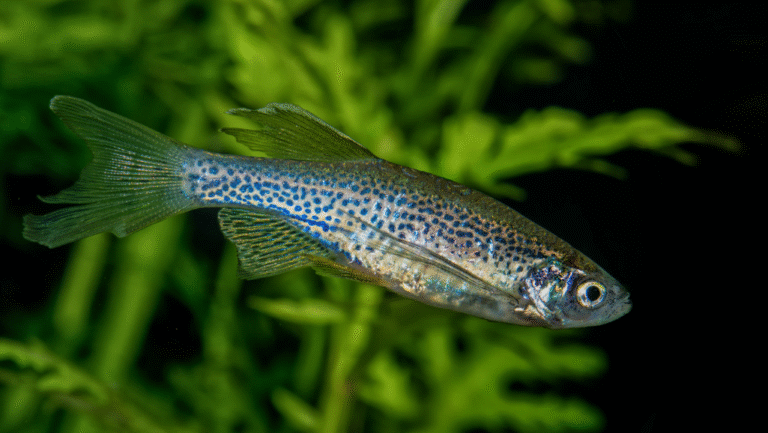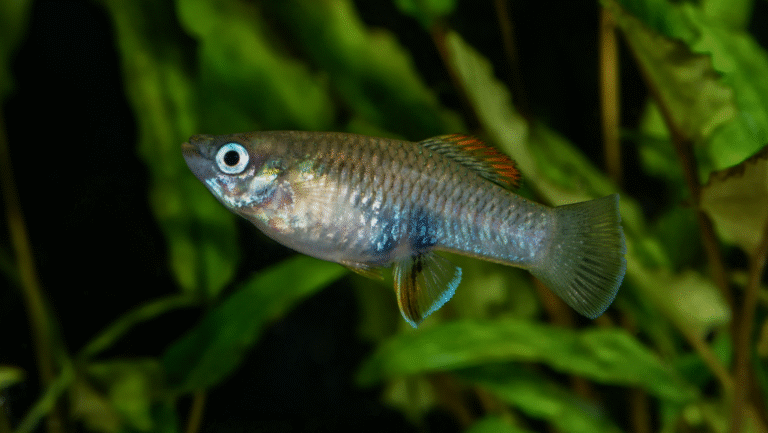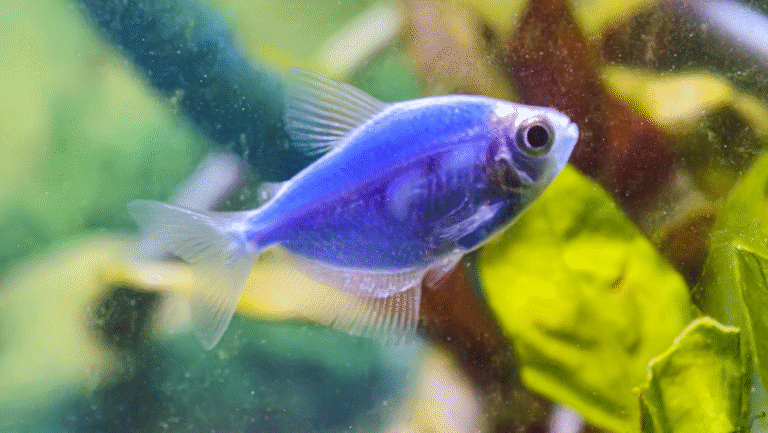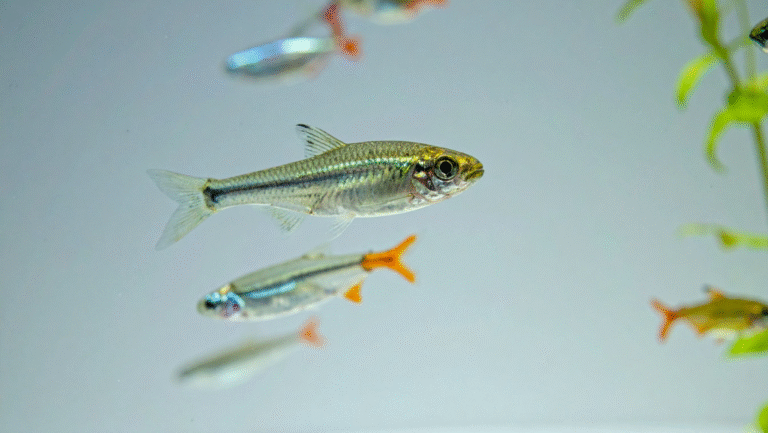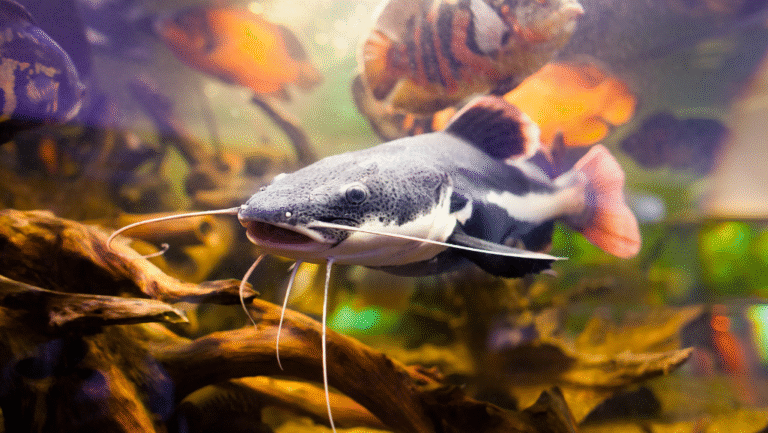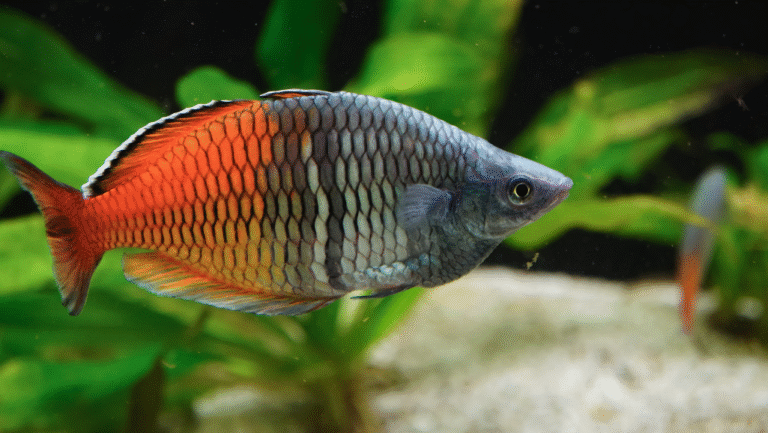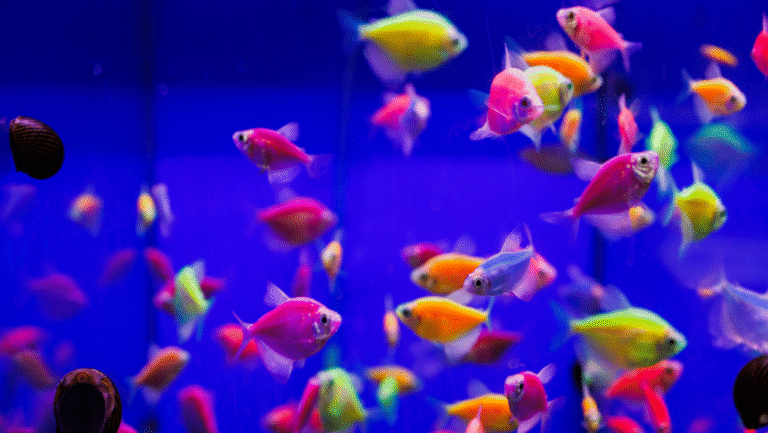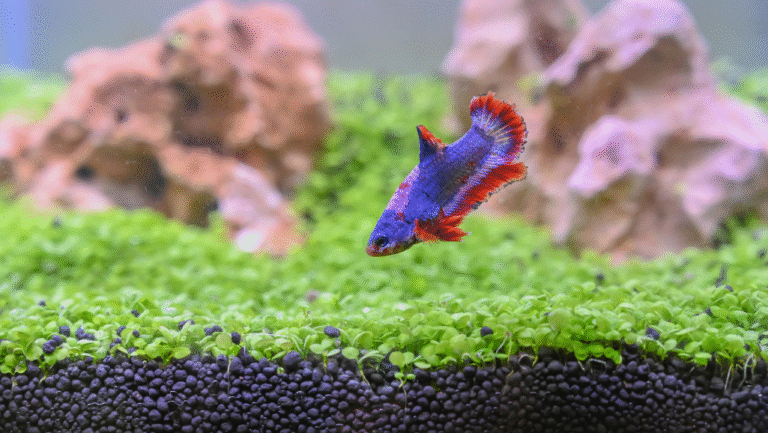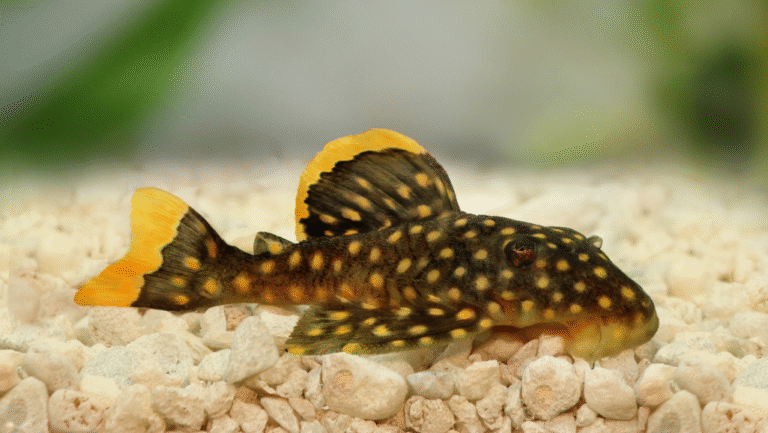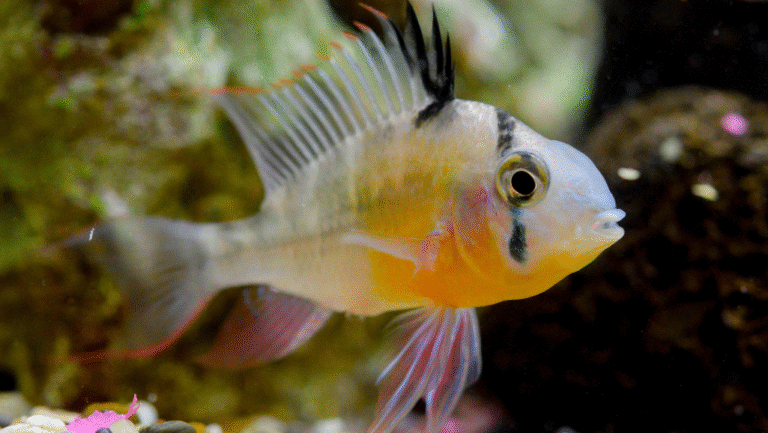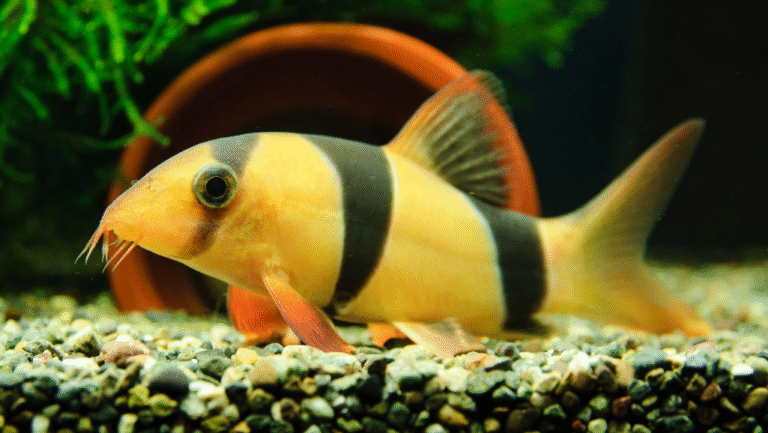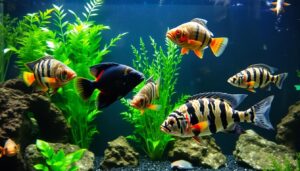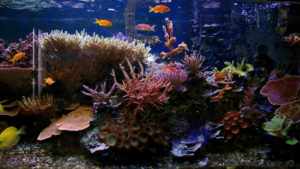Meet a tiny wonder for your home aquarium. Poecilia wingei brightens small tanks with dazzling colors and lively movement. These fish are hardy, beginner-friendly, and thrive in room-temperature setups.
The name honors john endler, who reintroduced the species from Venezuelan streams in 1975. Males stay slim at about 1 inch with flashy fins, while females grow to roughly 1.8 inches and show rounder abdomens.
Endler’s Livebearer breed often—every 23–30 days—so expect babies if you keep a mixed group. They do best with one male per 2–3 females and adapt to pH from 6.5–8.5.
For hobbyists and community tanks alike, these fish add energetic color without demanding complex care. Their relation to guppies matters when sourcing stock and protecting genetic lines.
Key Takeaways
- Poecilia wingei is a small, colorful species ideal for beginners.
- John Endler brought the fish to hobbyists in 1975; the name reflects that history.
- Males are ~1″ and colorful; females reach ~1.8″ with rounder bodies.
- They breed frequently; keep proper male-to-female ratios to manage lots of babies.
- Adaptable to varied water conditions and suitable for peaceful community tanks.
Start Here: How to Keep Poecilia wingei Thriving Right Now
Set stability first. Make sure your aquarium holds steady water parameters in the pH 6.5–8.5 range and avoids sharp swings in temperature. A stable environment reduces stress and keeps color and behavior lively.
Choose a tank size that fits your space and future plans. A 5–10 gallon tank suits a small group, but larger volumes make it easier to manage rapid reproduction and maintain water quality over time.
Prioritize gentle surface movement for oxygenation. A quiet sponge filter gives filtration without strong currents and supports beneficial bacteria.
- Temperatures: room-temperature tanks are fine, but add a heater if your room dips below the high 60s °F to prevent fluctuations.
- Stocking: aim for one male to 2–3 females to reduce chasing and encourage natural behavior.
- Routine: feed small portions twice a day, perform weekly partial water changes, and check water parameters at the same time each week.
Observe daily. Watch surface activity, clarity, and social interactions. Early adjustments to flow, feeding, or water changes save time and keep your fish healthy and thriving.
Know Your Fish: Identification, Types, and Names Hobbyists Use
Recognizing different types and sexes helps you spot quality stock at a glance. Males reach about 1 inch, are slim, and show vivid colors and ornate fins. Females grow to roughly 1.8 inches and appear silvery-tan with rounded abdomens.
Male coloration often appears at 3–4 weeks and deepens as they mature. Many males develop dark edging on the caudal fin that looks like a tiny sword. This color plays a role in courtship and dominance.
Hobbyists use class N to mean documented purebred Endlers (pure wingei). By contrast, an endler guppy refers to hybrids with Poecilia reticulata. Know the distinction to protect line history and breeding goals.
Popular varieties and quick facts
- Patterns: black bar, tiger, cobra, El Silverado, and lime green are common variety names.
- Species facts: Poecilia wingei typically lives about 2–3 years in good care.
- Tip: Colors and pattern placement vary inside lines; pick stock that fits your aesthetic and ethical goals.
“The name honors john endler, whose rediscovery brought wingei to hobbyists.”
Endler’s Livebearer Care Setup: Tank, Water, Plants & Equipment
Start with stability: the right volume, equipment, and plants make daily care easy.
Tank size that grows with your population
Begin with a 5–10 gallon tank for a small group; a 10-gallon fits a trio (one male, two females) comfortably. A 20+ gallon feels easier once fish multiply, giving space for more fry and steadier chemistry.
Stable water parameters
Keep temperature steady and pH in the 6.5–8.5 range. This species tolerates soft to hard water and room-temp setups, but a heater stabilizes small volumes and prevents sudden swings.
Aquascaping that works
Leave open surface areas for feeding and exploration while adding live aquarium plants to improve oxygen and absorb waste. Position hardscape to create swimming lanes and sight breaks that lower stress.
Smart equipment choices
Trust a sponge filter for gentle flow that protects fry and supports biofiltration. Use a low-flow setup so foods and micro pellets disperse slowly and every fish gets a bite.
“Build a system that’s beautiful and forgiving, so your livebearers flourish.”
- Choose a tank size that fits today and scales tomorrow.
- Prioritize stable water parameters over flashy gear.
- Use live aquarium plants and sponge filters for a calm, healthy aquarium.
Stocking with Confidence: Ratios, Community Tank Mates, and Space Planning
Plan your stocking to support long-term harmony and to reduce chasing in mixed groups. Start with a clear ratio: one male to 2–3 females so energetic courting won’t overwhelm females.
For tank size guidance, a 10-gallon works well for a trio. A 20-gallon lets 6–9 fish settle comfortably as your colony grows.
Choose peaceful companions
Pick small, calm community mates that live in different water levels. Tetras, danios, rasboras, Corydoras, and small plecos fit nicely.
Introduce a variety of body shapes and behaviors to animate zones without crowding the lot.
Manage fast-growing populations
Plan for fry from day one. Use dense planting and hiding spots to boost survival when you want more juveniles.
To limit numbers, consider gentle fry predators like African dwarf frogs or reduce cover. Read males and females for signs of stress; add plants, change ratios, or increase tank size before chasing becomes a problem.
“Match numbers, mates, and layout to enjoy a calm, colorful display.”
- Stock one male to 2–3 females for balance.
- Trio in 10-gallon; 6–9 fish in 20-gallon.
- Keep guppies separate if you want to avoid hybridization.
- Track additions and births to keep the population in check.
Feed for Color and Health: Daily Diets Endlers Devour
Feed with purpose: small, varied portions support bright colors and firm health. Endlers accept quality flakes, micro pellets, Repashy gel foods, and daphnia. These staples are sized to be small enough for effortless surface feeding and grazing.
Keep portions light and routine. Feed twice a day and stop once fish finish in a few minutes. This protects water clarity and keeps the tank stable.
- Staple rotation: flakes, micro pellets, gel foods, and daphnia—picked to suit surface feeders and bottom browsers.
- Variety boosts color: add frozen or live treats like baby brine shrimp and cyclops to sharpen colors and strengthen immunity.
- Fry care: use powdered diets, crushed flakes, and baby brine shrimp so babies grow evenly and confidently.
- Plants help: live aquarium plants offer biofilm and infusoria that supplement meals naturally.
“Let color and activity be your compass—when foods and variety are dialed in, colors pop and schooling feels alive.”
Breeding Made Simple: From Courtship to Raising Fry
With a few straightforward steps, you can turn your aquarium into a safe maternity ward for tiny fry.
Timing matters. Expect a new drop roughly every 20–30 days. Slightly warmer temperature often shortens the time between births, so plan space and care accordingly.
Maximizing fry survival
Stage the nursery using dense plants like water sprite, wisteria, Pogostemon stellatus, or guppy grass. Add spawning mops and a pre-filter sponge to protect babies from predators and strong suction.
First foods for babies
Feed foods that are small enough for tiny mouths: start with infusoria and powdered diets. Move to crushed flakes and baby brine shrimp as fry grow.
What to do with juveniles
Track growth—when juveniles reach 0.5–1 inch, they make good candidates to sell locally or share with new hobbyists.
Tip: Keep females well-fed and stress-free, use a harmonious ratio of one male per a few females, and maintain gentle filtration to help fry thrive.
- Expect a drop every ~20–30 days; monitor temperature.
- Use plants, mops, and sponges to boost survival.
- Rotate tiny foods to build color and healthy fins as they grow.
Hardy Yet Precious: Health, Line Strength, and Conservation Today
A calm aquarium and careful sourcing keep genetic lines robust and colors bright. Simple daily habits protect both your fish and the wild population they represent.
Everyday care to prevent issues
Keep water clean, nitrates low, and chemistry steady. Test regularly and do small, frequent water changes to avoid big swings.
- Daily: observe behavior and feed small portions.
- Weekly: check nitrates and pH; trim plants as needed.
- Stocking: maintain proper male-to-female ratios to reduce stress and uncontrolled breeding.
In the wild and in our tanks
Poecilia wingei is native to Venezuela’s Paria Peninsula and was listed as Endangered (IUCN 2024). Habitat loss, pollution, invasive species, and hybridization with released P. reticulata threaten wild numbers.
Ethical sourcing and genetics
Hobbyists maintain registries to preserve pure lines and document variety names like black bar. Avoid mixing guppies and endler guppy stocks if you want true wingei traits.
“Your choices at home shape the genetic story future keepers inherit.”
Conclusion
With steady habits and a well-planned tank, these tiny endler livebearer fish repay your time with bright color and lively behavior.
Make sure to stabilize water, refine feeding, and add protective plants so your aquarium stays calm and clear. Plan for fry and keep companions that match temperament and space.
Honor genetics: source ethically to avoid guppy mixes, track lineage, and share surplus juveniles with local hobbyists rather than releasing them. Use a blog or journal to note parameters, photos, and milestones.
Finish inspired: small, hardy endlers can turn a simple setup into a daily source of wonder. Trust clean water, routine care, and gentle observation to keep this vibrant livebearer thriving.
